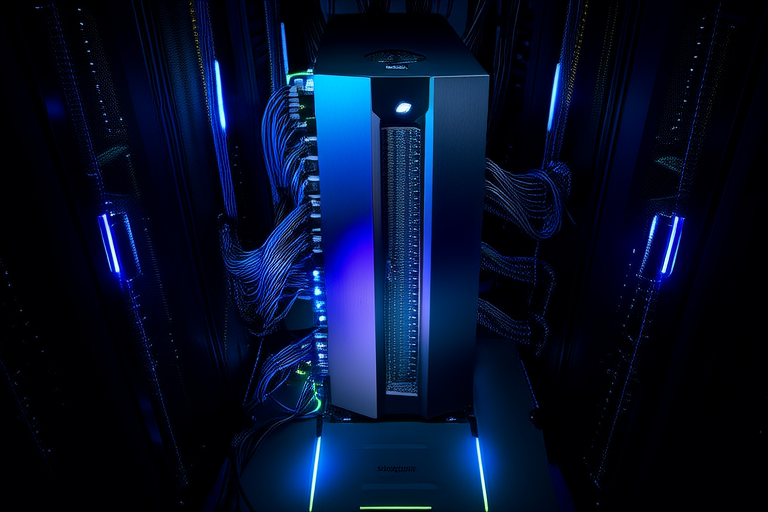From Basics to Beyond: Exploring the Depths of Machine Learning and Deep Learning
1. Introduction
Machine learning (ML) and deep learning (DL) are two of the most transformative technologies of our time. These fields enable computers to learn from data, make predictions, and improve over time without being explicitly programmed. As we navigate through an increasingly digital world, the importance of these technologies cannot be overstated. From optimizing supply chains in retail to diagnosing diseases in healthcare, ML and DL have found applications across numerous industries, driving innovation and efficiency.
The growing impact of these technologies is evident in sectors ranging from finance to transportation, where they are used to enhance customer experiences, streamline operations, and create new business models. This article aims to provide a comprehensive overview of machine learning and deep learning, from their basic principles to advanced applications, and explore the challenges and future directions in this rapidly evolving field.
2. What is Machine Learning?
Machine learning refers to the ability of computers to learn from data and improve their performance on tasks over time. At its core, ML involves developing algorithms that can identify patterns in data and use them to make predictions or decisions. There are three primary types of machine learning: supervised learning, unsupervised learning, and reinforcement learning.
- Supervised Learning: In supervised learning, the algorithm is trained on labeled data, meaning that each input has a corresponding output. Common applications include spam detection, image classification, and speech recognition.
- Unsupervised Learning: Unsupervised learning deals with unlabeled data, where the algorithm identifies patterns or structures within the data. Clustering and anomaly detection are typical use cases.
- Reinforcement Learning: Reinforcement learning involves training agents to make decisions based on feedback from the environment. It is widely used in robotics, gaming, and autonomous systems.
3. What is Deep Learning?
Deep learning is a subset of machine learning that focuses on neural networks with multiple layers, known as deep neural networks. These networks are designed to mimic the human brain’s structure and function, enabling them to process complex data and solve intricate problems. The key difference between traditional machine learning and deep learning lies in the complexity of the models and the amount of data required.
Neural networks are at the heart of deep learning, consisting of interconnected nodes or neurons organized into layers. These layers allow the network to learn hierarchical representations of data, making deep learning particularly effective for tasks involving large datasets, such as image and speech recognition.
4. The Evolution of Machine Learning and Deep Learning
The journey of machine learning and deep learning began in the mid-20th century with the development of early algorithms and models. Significant milestones include the introduction of perceptrons in the 1950s and the backpropagation algorithm in the 1980s, which laid the foundation for modern neural networks. The resurgence of deep learning in the late 2000s was driven by advances in computational power, the availability of large datasets, and the development of sophisticated architectures like convolutional neural networks (CNNs).
Influential figures such as Geoffrey Hinton, Yann LeCun, and Yoshua Bengio have played pivotal roles in advancing the field. Their work on neural networks and deep learning has led to breakthroughs in areas like image and speech recognition, natural language processing, and autonomous systems.
5. Core Concepts in Machine Learning and Deep Learning
Several fundamental concepts underpin machine learning and deep learning. These include algorithms, models, features, training, validation, and testing. Algorithms are the mathematical procedures used to train models on data, while models are the representations of learned patterns. Features are the attributes or variables used to describe the data, and training, validation, and testing are phases in the model-building process.
Common machine learning algorithms include linear regression, decision trees, and support vector machines. Linear regression is used for predicting continuous outcomes, decision trees for classification tasks, and support vector machines for both classification and regression. In deep learning, architectures like CNNs, RNNs, and transformers are employed for tasks such as image and video analysis, sequence modeling, and natural language understanding.
6. Applications of Machine Learning and Deep Learning
Machine learning and deep learning have found applications across various industries. In healthcare, ML algorithms are used for disease diagnosis, drug discovery, and personalized medicine. Financial institutions leverage ML for fraud detection, risk assessment, and algorithmic trading. Retailers use ML to optimize inventory management, recommend products, and enhance customer experience. Autonomous vehicles rely on deep learning for object detection, lane keeping, and navigation.
Specific deep learning applications include image recognition, natural language processing (NLP), and autonomous systems. Image recognition powers facial recognition, object detection, and medical imaging analysis. NLP enables chatbots, sentiment analysis, and machine translation. Autonomous systems, such as drones and robots, use deep learning for navigation and decision-making.
7. Challenges and Future Directions
Despite the remarkable progress in machine learning and deep learning, several challenges remain. Data privacy concerns, model bias, and interpretability are among the key issues. Ensuring that algorithms are fair and transparent is crucial for building trust and fostering adoption. Additionally, the increasing complexity of models and the need for large amounts of data pose significant hurdles.
Future trends in the field include advancements in artificial general intelligence (AGI), which would enable machines to perform any intellectual task that a human can. Other promising areas include quantum computing, which could revolutionize optimization and simulation, and ethical considerations in AI governance.
8. Conclusion
This article has explored the foundational concepts, historical evolution, and practical applications of machine learning and deep learning. From basic principles to advanced techniques, these technologies continue to shape our world, offering unprecedented opportunities for innovation and growth. For those interested in delving deeper, there are numerous resources available, including online courses, research papers, and community forums. By staying informed and engaged, you can contribute to the exciting developments in this dynamic field.




